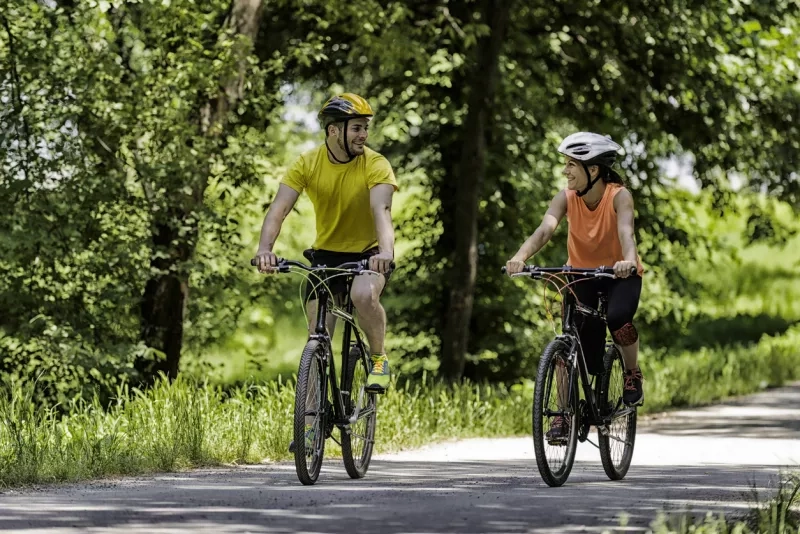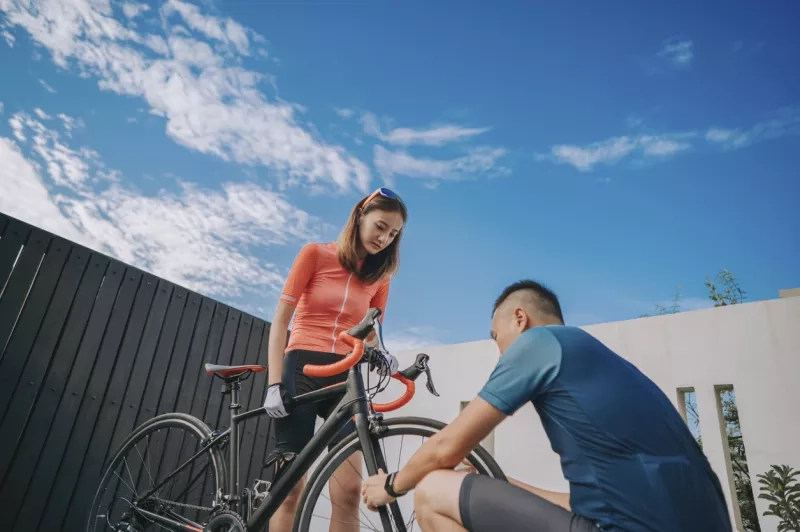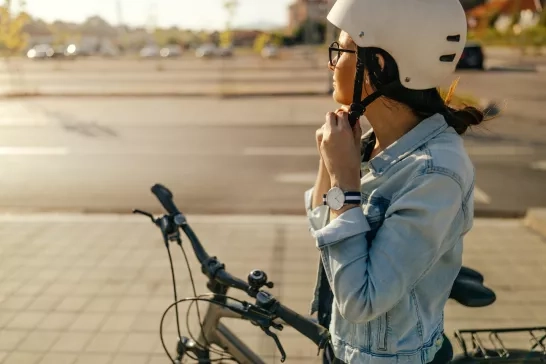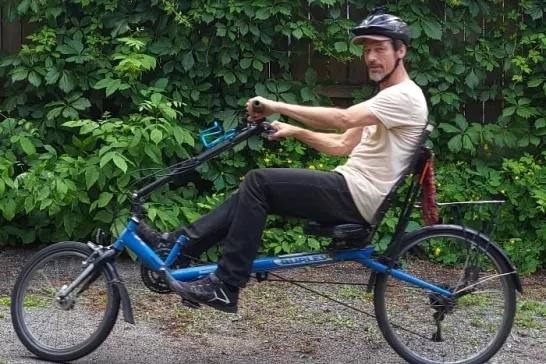
Prepare your bike for summer: Maintenance and safety tips
2 Minute Read
Ready to take your summer adventures to the next level? As the summer warms up, there’s no better moment to go biking! Cycling is a fantastic way to enjoy the warm weather and nature while getting some exercise.
If you haven’t cycled in a while, we’ve got you covered with expert advice before you hit the road. Here are some comprehensive steps to prepare your bike for summer, plus some helpful safety tips.
Prepare your bike for the road

First, prepare your bike for the road. Since it’s been a season since you last cycled, there are a few crucial things to examine. Start by giving your bike a thorough tune-up. This includes checking all bolts and screws to ensure they are tight and secure.
Inspect your brakes to ensure they’re clean and have sufficient padding. If the grooves on the padding are worn out, it’s time to replace them. Doing so is crucial for your safety. Clean and oil the chain; a well-maintained chain keeps your ride smooth and reduces wear on other components.
Check your tires for cracks, punctures, or other signs of wear and ensure they are correctly inflated to the recommended pressure, typically found on the tire’s sidewall. If your bike has been unused for several months, you might need to replace the tire tubes as they can degrade over time.
Additionally, make sure your lights and reflectors are working correctly, and don’t forget to pack a small repair kit and a water bottle for your ride. CAA recommends using reflectors and reflective tape on your helmet, clothes, and bicycle.
Consider visiting a professional bike shop for an annual service for a more reliable ride. This could include a comprehensive check on the bike’s overall health, ensuring every component is in top shape.
Get yourself ready for biking

With your bike ready, make sure you are, too. To prepare for the ride ahead, ensure you are visible by using a front bike light (required 30 minutes after sunset or before sunrise) and a red rear light. Equip your bike with lights and reflectors, and wear bright or reflective clothing, especially at night or in low-light conditions. You’ll also want to wear a properly fitted helmet every time you ride to protect your head in case of a fall or collision.
Stay alert to be aware of cars, other cyclists, and pedestrians. Use hand signals or a bell to indicate your intentions to drivers and other cyclists, and make eye contact with drivers at intersections to ensure they see you. Watch for potholes, loose gravel, and construction. Also, be cautious of car doors that can open unexpectedly.
Ensure everyone you ride with, especially kids, understands bike safety. Teach them to wear helmets, obey traffic signals, use hand signals, and ride predictably.
According to Ontario’s bicycle safety guidelines, cyclists should always ride in a straight line and avoid weaving in and out of parked cars. They should also use bike lanes when available and ride at least one meter away from parked cars to avoid “dooring” accidents. Cyclists should stop and look both ways at intersections, making eye contact with drivers to confirm they have been seen.
Have a plan if your bike breaks
In case of an emergency or a breakdown, services like the CAA offer Bike Assist™ roadside assistance for your bicycle, providing 24/7 coverage 365 days a year. This service, included with CAA Memberships, which start at just $30 a year, can be a lifesaver, ensuring you’re never stranded without help.




